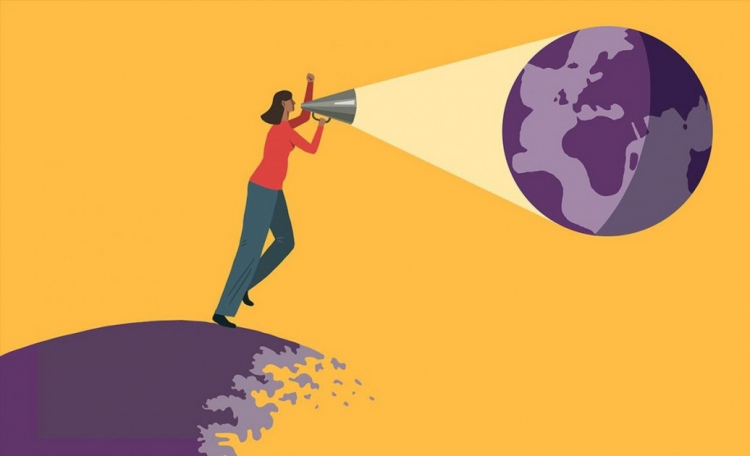"Have you ever been told that the technology sector isn't exactly a large estate dominated by women?" Polo explains in a chapter of Feministic. The program is broadcast every Monday, in monologue format and in a humorous tone, on FibraCAT TV. According to UNIR data in Catalonia, only 2% of women work in the technology sector . Of these, 13% program, 7% work in cyber security and 17% in video games. "All this with its corresponding salary gap of 9% garnishment", says the comedian.
A bit of history: Hackfeminism and cyberfeminism
In the 1980s, computer technology was dominated by men: it was a tool made by men and for men. It was here that the concept of cyberfeminism began to be used and cyberfeminists asked themselves: can we use technology to hack the codes of patriarchy? Can we escape online violence? It was the feminist theorist Donna Haraway in her famous essay "A Cyborg Manifesto" , in the early eighties, who imagined a future for feminism and proposed the cyborg as the leader of a new world order: part human and part machine, the cyborg challenged racial and patriarchal prejudices.
In the chapter "Hackfeminism and cyberfeminism" , Ana Polo explains different cyberfeminist initiatives such as the Editathons of Wikipedia, marathons to edit, create and improve Wikipedia articles with reliable and verifiable sources on a specific topic to break the existing gender gap in Wikipedia. In addition, we can also learn about the Ciberseguras campaign , a space that brings together many resources and tools to learn more about the Internet and digital security from a feminist perspective. You can find more in this specific section of our blog Dones TIC .
The report "Gender Violence Online" , developed in 2020 by the feminist lawyer Laia Serra and the magazine Pikara Magazine , with the support of Calala Fons de Dones , APC and Front Line Defenders , investigates sexist violence against activists in line from an intersectional perspective that takes into account other essential identity axes to make an inclusive critical approach without leaving anyone behind. It is based on this survey carried out by the Donestech collective in 2019.
According to data collected in the survey, 98.2% of women with a public presence on the internet have suffered sexist violence online . According to the study, there are three types of attacks that women and non-binary identities can receive online: attacks for being read as a woman; partners or ex-partners and sexual violence. The Feministic chapter: "Tips to combat digital masculinity" , Ana Polo summarizes.



